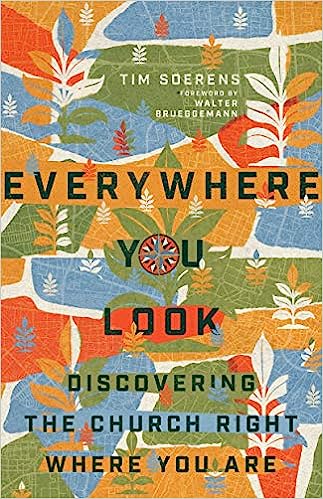This week we are in Chapter 5 “The Parish is the Unit of Change” of Tim Soren’s book, Everywhere You Look: Discovering the Church Right Where You Are. The title of this chapter is from a New York Times column by David Brooks entitled The Neighborhood is the Unit of Change.
The Parish:
Traditionally, a parish was a geographical subdivision of a diocese which was overseen by a priest. The idea behind a parish is that a bishop has responsibility for his entire diocese. The bishop would then delegate that authority and responsibility to individual priests over a smaller geographic area within his diocese. The care of the parish is not limited to the church itself but to the entire geographic region. Therefore, in the past when everyone belonged to the national church, the parish had the responsibility to care for everyone living within that geographic boundary. In many ways, the parish structure was the social welfare agency for a particular area.
In colonial South Carolina, the Anglican parish structure served not only to demarcate church boundaries but also served as election districts to the colonial Assembly and as tax collection districts. In liturgical churches, this idea of the parish as a geographic area remains. Southern Baptists can open churches across the street from each other, Episcopalians cannot.
As the Unit of Change.
Soren borrows this ancient idea of a parish to give us a vision of a third way of how the church can engage and change the world. For Soren, a “parish” is a “geographic area that’s large enough to live life together and small enough to be known as a character within it.” p.68. If we simply think about Horry County, we can see Soren’s idea more clearly. Under Soren’s definition North Myrtle Beach, Myrtle Beach, Carolina Forest, Conway, and Socastee are all distinct parishes.
Soren writes that when the church thinks about the Big Why of the church carrying out God’s plan of healing and reconciliation, we either think of change at the individual level or change at the systemic level. In doing so, we are either thinking too small or too big.
According to David Brooks, helping an individual is good, but then we are not really changing the structures and systems that shape lives and that may have been the root cause of the problem faced by that individual. As Brooks tells us, we can never clean only part of a pool. On the other hand, too often when we look at changing systems, we create or adopt one-size-fits-all programs drafted by academics or bureaucrats. Too often, to borrow a turn of phrase, these great programs seldom survive contact with reality.
The solution, as both Soren and Brooks write, is thinking of change at the neighborhood or parish level. At this level, we have the power to change the systems based on our local situations, local needs, and local resources. As we looked at last week in Chapter 4, limiting ourselves to the neighborhood level is a strength because limitations take us out of the theoretical and into the practical. Limitations give us the context in which to listen, to learn, and to act.”It gives us a common ground, a limited place or responsibility, and a space that allows us to participate and even lead within the multiple systems that share our common life.” p.70.
Soren is one of the founders of the Parish Collective. This is a parachurch organization that seeks to help local churches find their place in their own unique neighborhoods. I would encourage to look around their website.
The Second Mountain:
A few years ago, David Brooks wrote a book called The Second Mountain: The Quest for a Moral Life. The book is an expansion of the above article and similar articles that he has written. For Brooks, the First Mountain most of us climb is to reach those goals that our culture endorses: to be a success, to make your mark, to experience personal fulfillment. These goals eventually fail to satisfy. The Second Mountain occurs when a person moves from self-centered to other-centered and begins to embrace a life of interdependence, not independence. Climbing this Second Mountain requires four commitments: Vocation (or calling), Marriage, Faith and Philosophy, and Community. I have attached Brook’s chapter on Community which gives us concrete examples of what a parish/community-based commitment looks like in practice.
MESSIAH NOTES:
- This Saturday I had the opportunity to give the meditation for the Morning Prayer service at the Pee Dee / Waccamaw Deanery meeting in Cheraw. The service is HERE. The meditation given at the 16:45 mark on Hildegard of Bingen is HERE.
- This week, Rick Stall, our Senior Warden, and Kristi Burch, the chair of our Steering Committee, are having three listening sessions for you to share any experiences, ideas, and suggestions as we move forward as a parish. These sessions are on Wednesday at noon, Thursday at 9 a.m., and Saturday at 10 a.m.
On Tuesday, dinner is at 6. The menu is Cuban sandwiches and black bean soup. Discussion about 6:45. Compline at 8. Hope to see you here.
But seek the welfare of the city where I have sent you into exile, and pray to the Lord on its behalf, for in its welfare you will find your welfare.
Jeremiah 29:7


Pingback: Everywhere You Look, Ch.5: The Parish is the Unit of Change, pt.2 – Ancient Anglican